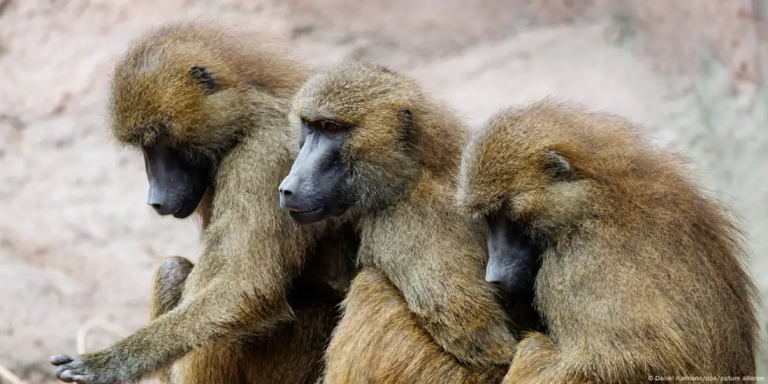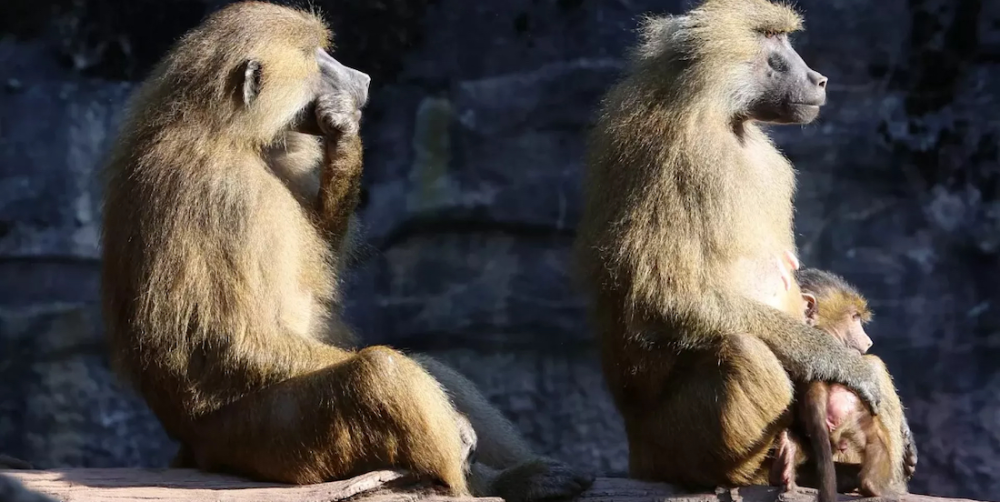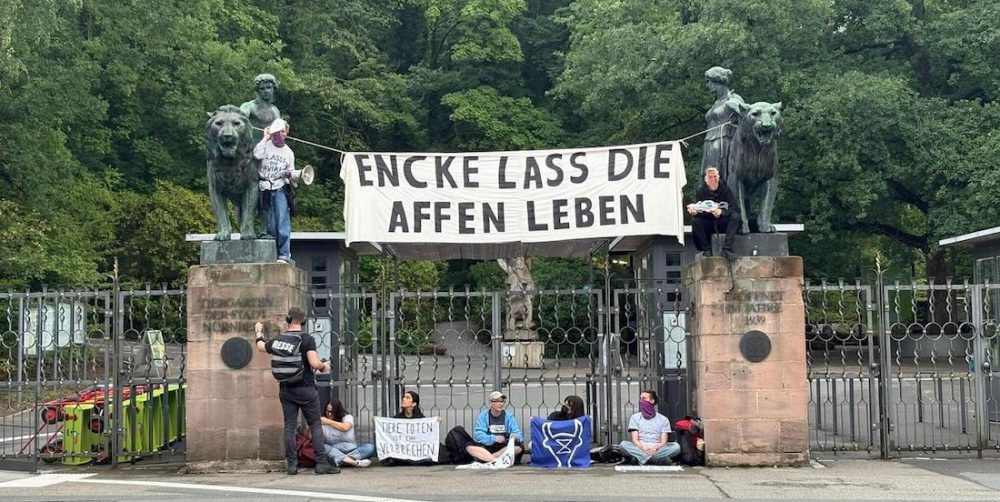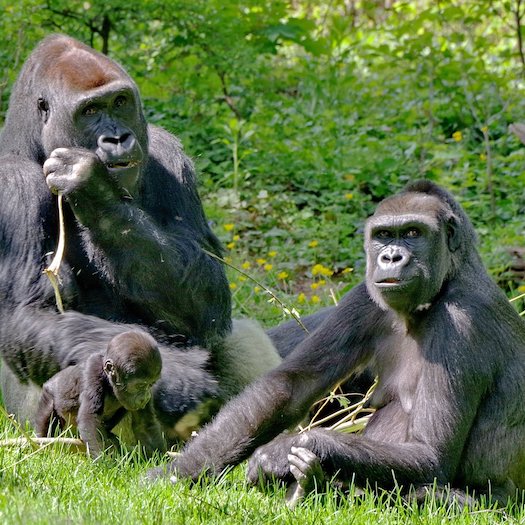
Culling (Killing) Sparks Global Outrage After Feeding Predators
In Nuremberg, Germany, the Tiergarten Nürnberg zoo culled 12 healthy Guinea baboons due to overcrowding, feeding six dismembered carcasses to predators. The decision, announced on July 29, 2025, sparked protests, with seven activists arrested. Animal rights groups filed criminal complaints, alleging violations of animal protection laws. The zoo defends the cull, citing failed rehoming efforts and unsuccessful contraception, but critics argue it reflects irresponsible breeding policies.
New York, N.Y. — On July 29, 2025, Nüremberg Zoo in southern Germany announced the culling of 12 healthy Guinea baboons due to overcrowding in their enclosure, a decision that has reverberated across the globe.
The zoo, known as Tiergarten Nürnberg, confirmed that six of the euthanized baboons were dismembered—heads, hands, and feet removed—before their remains were fed to lions, tigers, maned wolves, and yellow-throated martens.

The remaining carcasses were repurposed for scientific research or museum displays, intensifying public and activist criticism.
The zoo’s actions, justified as a last resort to address space constraints, have led to protests, arrests, and criminal complaints, highlighting deep-seated issues in zoo management and animal welfare.
Overcrowding Crisis at Nüremberg Zoo
The Nüremberg Zoo’s baboon enclosure, designed in 2009 to house 25 adults plus their offspring, had ballooned to over 40 Guinea baboons by 2025.
This overcrowding led to increased conflicts among the primates, resulting in injuries and stress that compromised their welfare.
Zoo director Dag Encke explained that the decision to cull was made after “yearslong consideration,” as efforts to rehome the surplus animals to zoos in Paris, China, and Spain had failed due to capacity issues at those facilities.
An earlier attempt at contraception was abandoned after it disrupted group dynamics and failed to control population growth effectively.
Jörg Beckmann, the zoo’s deputy director, emphasized that the culling targeted non-pregnant females and animals not involved in scientific studies. The baboons were euthanized by gunshot in transport crates, in accordance with animal welfare regulations, and their heads were removed for research purposes.
Beckmann noted that removing hands and feet was done “out of respect for zoo visitors,” as the feeding of carcasses to predators occurred during public hours. The zoo’s transparency about the process, including signs indicating feeding times, did little to quell the public’s dismay.

Animal Rights Groups Mobilize in Protest
The culling prompted an immediate and visceral response from animal rights groups. On July 29, 2025, Tiergarten Nürnberg closed for “operational reasons,” a move widely interpreted as an attempt to manage escalating protests.
Seven activists from Animal Rebellion were arrested after scaling zoo fences, with one protester gluing their hands to the ground near the entrance. The group established a protest camp outside the zoo, demanding an end to primate culling and a halt to breeding programs.
Banners reading “Encke, let the monkeys live” and “We won’t remain silent until all animals can live in freedom” adorned the protest site.

Pro Wildlife, a prominent animal rights organization, labeled the culling “avoidable and illegal,” arguing that the zoo’s “irresponsible and unsustainable breeding policies” were to blame. Christoph Maisack, head of the German Legal Association for Animal Protection Law, contended that allowing uncontrolled breeding does not justify killing healthy animals.
The German Animal Welfare Federation, led by Thomas Schröder, filed a detailed seven-page criminal complaint with the Nuremberg-Fürth public prosecutor’s office, asserting that the culling violated Germany’s Animal Welfare Act.
The complaint emphasized that species conservation cannot supersede the right to life of healthy animals, citing prior case law from the Naumburg Higher Regional Court.
“We neuter our animals, always, and make arrangements to keep any dog we are unable to rehome
for life.” “The idea that an actual zoo–with a real budget–could defend what they call ‘culling,’
what we would call ‘killing,’ citing ‘failed rehoming efforts and unsuccessful contraception,’ is
spectacularly outrageous,” states founder of the New York Shih Tzu Rescue Society, Jim Luce.
Legal and Ethical Implications
The Nuremberg-Fürth public prosecutor’s office confirmed receiving over 100 criminal complaints related to the culling, with investigations underway to determine whether the zoo’s actions breached animal protection laws.

Critics argue that the zoo’s failure to manage breeding effectively over decades created a preventable crisis.
The European Association of Zoos and Aquaria (EAZA), which sets guidelines for member zoos, permits culling as a “legitimate last resort” to preserve population health.
Animal rights advocates challenge the applicability of this standard when alternatives like improved contraception or facility expansion were not fully explored.
The Nuremberg Zoo’s decision to feed the baboon carcasses to predators echoes a controversial 2014 incident at Copenhagen Zoo.
There, a healthy giraffe named Marius was euthanized, dissected publicly, and fed to lions.
That event similarly drew global condemnation, highlighting a recurring ethical dilemma in European zoos: balancing population control with public sentiment and legal obligations.
Dag Encke acknowledged the emotional weight of the baboon culling, noting that the close evolutionary relation of baboons to humans may have amplified public outrage compared to routine culling of other species.
Broader Questions on Zoo Practices
The Nuremberg Zoo controversy underscores broader issues in zoo management worldwide. Zoos often face space and funding constraints, yet their breeding programs, intended to support species conservation, can lead to surplus animals that cannot be rehomed.
Critics argue that zoos prioritize visitor appeal over animal welfare, breeding charismatic species like baboons to attract crowds without planning for long-term population sustainability. The German Animal Welfare Federation has called for stricter regulations on zoo breeding policies, urging lawmakers to prioritize animal protection over economic considerations.
Public sentiment, amplified by social media, has further complicated the zoo’s position. Posts on X described the culling as “heartbreaking” and “unethical,” with some users drawing parallels to historical atrocities in Nuremberg, a city with a complex past.
Others defended the zoo, arguing that feeding culled animals to predators mimics natural processes and supports the nutritional needs of carnivores like lions and tigers. The polarized discourse reflects the challenge of aligning zoo ethics with public expectations in an era of heightened animal rights awareness.
Path Forward for Nuremberg Zoo
As the Nuremberg Zoo navigates the fallout, it faces pressure to reform its practices. Animal Rebellion and other groups are advocating for a complete halt to breeding programs until sustainable solutions are implemented.
The zoo has pledged to review its breeding policies and explore non-lethal population control methods, but rebuilding public trust will be a formidable task. The ongoing legal investigation may set a precedent for how European zoos address overcrowding and culling, potentially reshaping industry standards.
The incident has also sparked a global conversation about the role of zoos in modern society. Are they sanctuaries for species conservation, or are they outdated institutions that prioritize profit over animal welfare?
The Nuremberg Zoo’s actions have brought these questions to the forefront, challenging stakeholders to find a balance that respects both the animals in their care and the public’s growing demand for ethical treatment.
#NurembergZoo #AnimalWelfare #ZooEthics #BaboonCulling #AnimalRights
TAGS: Nuremberg Zoo, Guinea baboons, animal welfare, zoo ethics, culling,
animal rights, Germany, Tiergarten Nürnberg, species conservation, protests
